Verdict on the Samsung Galaxy A36 5G
The Galaxy A36 is a high-quality smartphone within the affordable mid-range segment, featuring an IP67 certification and Gorilla Glass Victus+. The Galaxy A36 places a special focus on security. Samsung emphasizes various software measures to protect the user, as well as the hardware-supported Knox Vault security architecture. Buyers can also look forward to six years of security updates, including a quarterly patch supply.
Despite some minor shortcomings, such as its slow and somewhat inaccurate fingerprint sensor or its wide display bezels, the Galaxy A36 left a positive overall impression on us. It offers good value for money, now costing well under $400. If you would rather steer clear of the Samsung phone in view of its Snapdragon 6 Gen 3, then you should consider the Nothing Phone (3a) or Poco X7 Pro as viable alternatives.
In terms of its performance, especially in the context of long-term use, there are a few question marks surrounding its Qualcomm chipset. Its performance gain compared to the Galaxy A35 is hardly noticeable, and in general, the 2025 model's performance doesn't convey a feeling of confidence.
Pros
Cons
Price and availability
At the time of writing, the Samsung Galaxy A36 5G is available to order from Amazon for $384.99.
Table of Contents
- Verdict on the Samsung Galaxy A36 5G
- Specifications of the Samsung Galaxy A36 5G
- Case - The Galaxy A36 5G features a glass back
- Connectivity - The Samsung phone only has USB 2.0
- Software - The mid-range phone with long update support
- Communication and GNSS - The Galaxy A36 5G with WiFi 6
- Telephone functions and call quality - The Samsung smartphone with eSIM support
- Cameras - The Galaxy A36 5G with a Sony sensor?
- Accessories and warranty - The Samsung phone without a power supply
- Input devices and operation - The Galaxy A36 5G with FaceUnlock
- Display - The Samsung phone uses AMOLED
- Performance - The Samsung phone with a Qualcomm SoC
- Games - Can the Galaxy A36 run games?
- Emissions - The Samsung smartphone isn't throttled
- Battery life - The Galaxy A36 charges quite quickly
- Notebookcheck total rating
- Possible alternatives compared
The most popular mid-range smartphone series according to Samsung has been given a successor generation. Alongside the top-of-the-range Galaxy A56 5G, its smaller brother aims to impress with its good price-performance ratio in particular—without compromising on security and data protection all the while. Samsung places particular emphasis on its new AI features called "Awesome Intelligence" and the extra-long update period for its mid-range phones. Samsung has gone for Qualcomm for its chipset this year, equipping the mid-range phone with the Snapdragon 6 Gen 3.
Specifications of the Samsung Galaxy A36 5G
Case - The Galaxy A36 5G features a glass back
The Galaxy A36 is equipped with a 6.7-inch display, so it's 0.1 inches larger than its predecessor. In addition, the bezels around its screen have become almost one millimeter narrower, increasing its display-to-surface ratio to a decent 86.5 percent. Compared to other smartphones in this price range, however, the edges around its Super AMOLED panel are still a little wide. The Samsung phone now weighs in at 195 grams, which is 14 grams less than the A35.
To protect its display, Samsung uses Gorilla Glass Victus+, which is not only scratch-resistant but should theoretically also withstand drops from a height of up to two meters. Its back is clad in Corning Gorilla Glass 7, i.e. Gorilla Glass Victus. A highlight in this price range is its IP67 certification, which protects the phone's case against dust and water. The Galaxy A36's build quality is exemplary and all gaps are even. However, the frame of the Galaxy A36 is only made of plastic, which compromises its feel and premium appearance compared to the Galaxy A56. That being said, the Samsung phone doesn't feel cheap by any means.
Connectivity - The Samsung phone only has USB 2.0
The Galaxy A36 comes with either 6 or 8 GB of RAM, in combination with 128 or 256 GB of internal storage. The Samsung phone's Universal Flash Storage (UFS) is no longer expandable via microSD cards. However, OTG is supported, allowing you to connect external storage media with FAT, FAT32 or exFAT formatting. NTFS is also possible, but only data reading is permitted in this case.
Otherwise, the mid-range smartphone offers good connectivity, although it still only uses USB 2.0. Its transfer speeds of 29 MB/s weren't particularly high during the copying test.
The Galaxy A36 uses the hardware-supported Knox Vault, which combines a dedicated processor with a storage unit to secure personal data such as passwords. According to Samsung, a number of extensive security measures are also implemented into the phone, such as anti-theft protection.
Software - The mid-range phone with long update support
The Galaxy A36's update supply, which includes six major updates to its operating system and six years of security updates including quarterly patches, is great for a mid-range phone. Hardly any other smartphone in this price range offers this package, with the Moto G75 or Nothing Phone (3a) coming closest to Samsung's exemplary software support. The Galaxy A36 is once again also available as an Enterprise Edition—here, there are even seven years of security and One UI updates.
During our test, the Galaxy A36 was delivered with Android 15 including security patches from April 2025 and the in-house user interface One UI 7. New is "Awesome Intelligence" as a mobile AI with a wide range of AI functions and Circle to Search. The little brother of the Galaxy AI from the Galaxy S models processes texts, images and videos and provides familiar features for photo editing, such as the object eraser.
Sustainability
The Galaxy A36 is delivered in plastic-free packaging. Samsung hasn't provided exact details on its use of recycled materials, but there is plenty of data on its CO2 emissions. Values of 35 and 41 kgCO2 eq are given for Europe.
Communication and GNSS - The Galaxy A36 5G with WiFi 6
With IEEE 802.11-ax, the Galaxy A36 only uses WiFi 6 with two frequency bands. However, its transfer rates were quite fast and stable using our reference router, the Asus ROG Rapture GT-AXE11000. The installed modem supports a solid range of frequencies for both LTE and 5G, making the Samsung phone an interesting travel companion. Even so, the Galaxy S25 supports significantly more bands.
| Networking | |
| Samsung Galaxy A36 5G | |
| iperf3 transmit AXE11000 | |
| iperf3 receive AXE11000 | |
| Samsung Galaxy A35 5G | |
| iperf3 transmit AXE11000 | |
| iperf3 receive AXE11000 | |
| Xiaomi Redmi Note 14 Pro 5G | |
| iperf3 transmit AXE11000 | |
| iperf3 receive AXE11000 | |
| Xiaomi Poco X7 | |
| iperf3 transmit AXE11000 | |
| iperf3 receive AXE11000 | |
| Nothing Phone (3a) | |
| iperf3 transmit AXE11000 | |
| iperf3 receive AXE11000 | |
| Average 802.11 a/b/g/n/ac/ax | |
| iperf3 transmit AXE11000 | |
| iperf3 receive AXE11000 | |
| Average of class Smartphone | |
| iperf3 transmit AXE11000 | |
| iperf3 receive AXE11000 | |
Outdoors, the Galaxy A36 quickly finds a satellite signal and locates its position with an accuracy of 3 meters. All the major global satellite networks are available for locating, but only in single-band mode.
During our practical test consisting of a short trip on foot, on which we took a reference smartwatch (Garmin Venu 2) with us to compare, the Samsung phone cut a good figure. Still, walking around corners wasn't always accurately mapped and there were some minor deviations from the actual route we took. All-in-all, however, a good performance and completely sufficient for navigation tasks.
Telephone functions and call quality - The Samsung smartphone with eSIM support
Cameras - The Galaxy A36 5G with a Sony sensor?
The Galaxy A36's front-facing camera has a resolution of 12 MPix and is equipped with a fixed focus. The lens can create 10-bit HDR images and features a 4K30 option. Its image quality for photos is good, and skin tones look quite natural.
The 50 MPix main camera with optical image stabilization is likely based on the Sony LYT-600 or IMX882—Samsung hasn't provided exact details on the 1/1.95-inch sensor. While the lens shows a good dynamic range, some details are swallowed up even in daylight. In low light, on the other hand, the shots look increasingly noisy with a soft focus, but they're nice and bright.
The camera system comprises a total of three lenses. The main camera is supplemented by an ultra-wide-angle lens with an 8-MPix resolution and a 5-MPix macro camera. Zooming is exclusively digital, which results in very poor quality beyond 2x magnification. The ultra-wide angle, on the other hand, is pretty decent for the price range—even photos don't look particularly sharp and quickly become noisy in darker areas.
Videos can be recorded in Ultra HD at up to 30fps, while 1080p recordings support a maximum of 60fps. The image stabilization using the 50 MPix lens is good overall. Those who like to use third-party apps for videos should note that the Galaxy A36's Camera2 API only has a limited support level. This means that only limited access to the camera functions is possible.
Image comparison
Choose a scene and navigate within the first image. One click changes the position on touchscreens. One click on the zoomed-in image opens the original in a new window. The first image shows the scaled photograph of the test device.
Main camera Main camera Low lightUltra-wide angle5x zoomIn controlled lighting conditions, we analyzed the main camera's color reproduction in comparison to the actual reference colors. The Galaxy A36 showed some brightening, but no major deviations. We only observed one outlier in color fidelity (>15) in the ColorChecker passport, otherwise the Samsung phone produced a consistent color image.

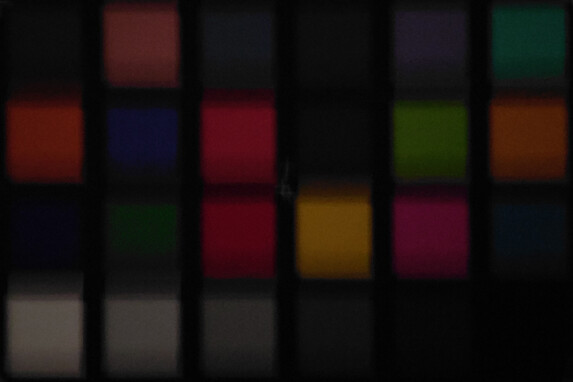
Accessories and warranty - The Samsung phone without a power supply
The Galaxy A36 only comes with a USB-C cable and a SIM tool. A protective film doesn't come pre-installed. The matching Samsung power adapter or other accessories are optionally available to buy from the Samsung online store.
The phone is covered by a standard 12-month warranty, which can be extended via the manufacturer's Care+ insurance package. This costs between $40 and $120, depending on the service period and scope of insurance.
Input devices and operation - The Galaxy A36 5G with FaceUnlock
The Galaxy A36's responsive touchscreen ensures smooth operation with a high refresh rate of 120 Hz. During everyday use, on the other hand, the Samsung phone always seems a little overwhelmed and minor stutters occur. As soon as actions are processed in the background, such as updating apps, its performance drops noticeably.
While the optical sensor integrated into the phone's OLED display does recognize fingerprints, its reliability isn't the best and the Galaxy A36 takes considerably longer to unlock compared to the S series' ultrasonic models. Alternatively, the Galaxy A36 offers optional facial recognition via the front-facing camera, which generally works well. However, this method has some limitations: not only is it less secure than the fingerprint sensor, but it's also unreliable in poor lighting conditions.
The installed linear vibration motor provides nice haptic feedback and can be fully customized in the device's settings, letting users adjust its intensity.
Display - The Samsung phone uses AMOLED

The Galaxy A36 has a 6.7-inch Super AMOLED screen. Its refresh rate is automatically adjusted by the system straight out of the box, and is either 60 or 120 Hz. The panel has grown by 0.1 inches compared to its predecessor, resulting in a slightly lower pixel density with the same resolution.
During our test, the Galaxy phone managed over 1,100 cd/m² when showing a full white display with the ambient light sensor activated. As is typical for OLEDs, it got better when depicting a distribution of light and dark areas (APL18)—here, its brightness increased to up to 1,877 cd/m². When playing an HDR video, we even noted 2,012 cd/m², ensuring very good HDR effects and a wider contrast range.
| |||||||||||||||||||||||||
Brightness Distribution: 98 %
Center on Battery: 1127 cd/m²
Contrast: ∞:1 (Black: 0 cd/m²)
ΔE ColorChecker Calman: 1.8 | ∀{0.5-29.43 Ø4.78}
ΔE Greyscale Calman: 2.1 | ∀{0.09-98 Ø5}
99.9% sRGB (Calman 2D)
Gamma: 2.11
CCT: 6466 K
| Samsung Galaxy A36 5G Super AMOLED, 2340x1080, 6.7" | Samsung Galaxy A35 5G Super AMOLED, 2340x1080, 6.6" | Xiaomi Redmi Note 14 Pro 5G AMOLED, 2712x1220, 6.7" | Xiaomi Poco X7 AMOLED, 2712x1220, 6.7" | Nothing Phone (3a) AMOLED, 2392x1080, 6.8" | |
|---|---|---|---|---|---|
| Screen | -11% | 12% | 9% | -42% | |
| Brightness middle (cd/m²) | 1127 | 904 -20% | 1138 1% | 1156 3% | 1287 14% |
| Brightness (cd/m²) | 1137 | 912 -20% | 1137 0% | 1150 1% | 1274 12% |
| Brightness Distribution (%) | 98 | 97 -1% | 97 -1% | 98 0% | 97 -1% |
| Black Level * (cd/m²) | |||||
| Colorchecker dE 2000 * | 1.8 | 2.1 -17% | 1.1 39% | 1.1 39% | 1.9 -6% |
| Colorchecker dE 2000 max. * | 2.8 | 2.8 -0% | 2.6 7% | 3.1 -11% | 8.7 -211% |
| Greyscale dE 2000 * | 2.1 | 2.2 -5% | 1.6 24% | 1.6 24% | 3.4 -62% |
| Gamma | 2.11 104% | 2.1 105% | 2.23 99% | 2.22 99% | 2.26 97% |
| CCT | 6466 101% | 6478 100% | 6284 103% | 6304 103% | 7072 92% |
* ... smaller is better
The downside of rich blacks and high dynamics is OLED flickering, which can lead to burning eyes or headaches in sensitive people. At minimum brightness, the Galaxy A36's refresh rate also isn't particularly high at 120 Hz to 240 Hz. Although its flat and even amplitude curve mitigates this a little, we would have liked to see high-frequency PWM dimming used here.
Screen Flickering / PWM (Pulse-Width Modulation)
| Screen flickering / PWM detected | 120 Hz Amplitude: 13.04 % Secondary Frequency: 240 Hz | ||
The display backlight flickers at 120 Hz (worst case, e.g., utilizing PWM) . The frequency of 120 Hz is very low, so the flickering may cause eyestrain and headaches after extended use. In comparison: 53 % of all tested devices do not use PWM to dim the display. If PWM was detected, an average of 8108 (minimum: 5 - maximum: 343500) Hz was measured. | |||
Measurement series with fixed zoom level and different brightness settings (The amplitude curve at minimum brightness looks flat, but this is due to the scaling. The info box shows the enlarged version of the amplitude at minimum brightness).
Our analysis with a photo spectrometer and Calman's software revealed the mid-range phone to achieve low average Delta-E deviations in the sRGB color space, and its color temperatures were spot on using the "Natural" profile. Unfortunately, the Samsung One UI only offers two color profiles, whereby the most accurate display of colors and grayscale doesn't allow any adjustments to the color temperature. Samsung should urgently offer users more setting options in this respect.
Display Response Times
| ↔ Response Time Black to White | ||
|---|---|---|
| 1.57 ms ... rise ↗ and fall ↘ combined | ↗ 0.8225 ms rise | |
| ↘ 0.748 ms fall | ||
| The screen shows very fast response rates in our tests and should be very well suited for fast-paced gaming. In comparison, all tested devices range from 0.1 (minimum) to 240 (maximum) ms. » 8 % of all devices are better. This means that the measured response time is better than the average of all tested devices (20.2 ms). | ||
| ↔ Response Time 50% Grey to 80% Grey | ||
| 1.19 ms ... rise ↗ and fall ↘ combined | ↗ 0.599 ms rise | |
| ↘ 0.59 ms fall | ||
| The screen shows very fast response rates in our tests and should be very well suited for fast-paced gaming. In comparison, all tested devices range from 0.165 (minimum) to 636 (maximum) ms. » 4 % of all devices are better. This means that the measured response time is better than the average of all tested devices (31.6 ms). | ||
The Galaxy A36 faces no issues when being used outdoors; even in direct sunlight, content always remains clearly legible. Even so, if you do without the ambient light sensor, you'll have to contend with less brightness (419 cd/m²).
The OLED panel's viewing angles are very stable, and we only noted a moderate loss of brightness when viewed flat. Only a slight blue haze covers the panel at extreme viewing angles.
Performance - The Samsung phone with a Qualcomm SoC
The Snapdragon 6 Gen 3 inside the Galaxy A36 features two Cortex-A78 cores and four power-saving cores based on the Cortex-A55. With the exception of slightly higher clock rates, the chipset is therefore the same as the Snapdragon 6 Gen 1 from 2022, an entry-level SoC. Unsurprisingly, the Galaxy A36 couldn't keep up with more powerful mid-range smartphones in our test, such as the Poco X7 Pro. The Nothing Phone (3a) with the Snapdragon 7s Gen 3 was around 10 to 15 percent ahead of the Samsung phone in the Geekbench test. We also measured hardly any performance gain over its predecessor. In fact, the Exynos 1380 of the Galaxy A35 often performed slightly better in the benchmarks.
| UL Procyon AI Inference for Android - Overall Score NNAPI | |
| Average of class Smartphone (3769 - 81594, n=135, last 2 years) | |
| Average Qualcomm Snapdragon 6 Gen 3 (8253 - 9416, n=3) | |
| Nothing Phone (3a) | |
| Xiaomi Poco X7 | |
| Samsung Galaxy A36 5G | |
| Xiaomi Redmi Note 14 Pro 5G | |
| Samsung Galaxy A35 5G | |
When it comes to the phone's integrated Adreno 710 graphics unit, the gap between the Galaxy A36 and a Nothing Phone (3a) was just as wide during our test as with the CPU. The Qualcomm GPU also proved not to be major upgrade compared to the values of a Mali-G68 MP5.
GFXBench (DX / GLBenchmark) 2.7: T-Rex Onscreen | 1920x1080 T-Rex Offscreen
GFXBench 3.0: on screen Manhattan Onscreen OGL | 1920x1080 1080p Manhattan Offscreen
GFXBench 3.1: on screen Manhattan ES 3.1 Onscreen | 1920x1080 Manhattan ES 3.1 Offscreen
GFXBench: on screen Car Chase Onscreen | 1920x1080 Car Chase Offscreen | on screen Aztec Ruins High Tier Onscreen | 2560x1440 Aztec Ruins High Tier Offscreen | on screen Aztec Ruins Normal Tier Onscreen | 1920x1080 Aztec Ruins Normal Tier Offscreen | 3840x2160 4K Aztec Ruins High Tier Offscreen
| 3DMark / Wild Life Extreme Unlimited | |
| Nothing Phone (3a) | |
| Samsung Galaxy A36 5G | |
| Xiaomi Redmi Note 14 Pro 5G | |
| Xiaomi Poco X7 | |
| Samsung Galaxy A35 5G | |
| 3DMark / Wild Life Extreme | |
| Nothing Phone (3a) | |
| Samsung Galaxy A36 5G | |
| Xiaomi Redmi Note 14 Pro 5G | |
| Xiaomi Poco X7 | |
| Samsung Galaxy A35 5G | |
| 3DMark / Wild Life Unlimited Score | |
| Nothing Phone (3a) | |
| Samsung Galaxy A36 5G | |
| Xiaomi Redmi Note 14 Pro 5G | |
| Xiaomi Poco X7 | |
| Samsung Galaxy A35 5G | |
| GFXBench (DX / GLBenchmark) 2.7 / T-Rex Onscreen | |
| Samsung Galaxy A36 5G | |
| Samsung Galaxy A35 5G | |
| Xiaomi Redmi Note 14 Pro 5G | |
| Xiaomi Poco X7 | |
| Nothing Phone (3a) | |
| GFXBench (DX / GLBenchmark) 2.7 / T-Rex Offscreen | |
| Nothing Phone (3a) | |
| Samsung Galaxy A36 5G | |
| Samsung Galaxy A35 5G | |
| Xiaomi Redmi Note 14 Pro 5G | |
| Xiaomi Poco X7 | |
| GFXBench 3.0 / Manhattan Onscreen OGL | |
| Samsung Galaxy A35 5G | |
| Samsung Galaxy A36 5G | |
| Xiaomi Redmi Note 14 Pro 5G | |
| Xiaomi Poco X7 | |
| Nothing Phone (3a) | |
| GFXBench 3.0 / 1080p Manhattan Offscreen | |
| Nothing Phone (3a) | |
| Xiaomi Redmi Note 14 Pro 5G | |
| Xiaomi Poco X7 | |
| Samsung Galaxy A35 5G | |
| Samsung Galaxy A36 5G | |
| GFXBench 3.1 / Manhattan ES 3.1 Onscreen | |
| Nothing Phone (3a) | |
| Samsung Galaxy A36 5G | |
| Samsung Galaxy A35 5G | |
| Xiaomi Redmi Note 14 Pro 5G | |
| Xiaomi Poco X7 | |
| GFXBench 3.1 / Manhattan ES 3.1 Offscreen | |
| Nothing Phone (3a) | |
| Xiaomi Redmi Note 14 Pro 5G | |
| Xiaomi Poco X7 | |
| Samsung Galaxy A36 5G | |
| Samsung Galaxy A35 5G | |
| GFXBench / Car Chase Onscreen | |
| Nothing Phone (3a) | |
| Samsung Galaxy A36 5G | |
| Samsung Galaxy A35 5G | |
| Xiaomi Redmi Note 14 Pro 5G | |
| Xiaomi Poco X7 | |
| GFXBench / Car Chase Offscreen | |
| Xiaomi Redmi Note 14 Pro 5G | |
| Nothing Phone (3a) | |
| Xiaomi Poco X7 | |
| Samsung Galaxy A35 5G | |
| Samsung Galaxy A36 5G | |
| GFXBench / Aztec Ruins High Tier Onscreen | |
| Nothing Phone (3a) | |
| Samsung Galaxy A36 5G | |
| Samsung Galaxy A35 5G | |
| Xiaomi Redmi Note 14 Pro 5G | |
| Xiaomi Poco X7 | |
| GFXBench / Aztec Ruins High Tier Offscreen | |
| Nothing Phone (3a) | |
| Xiaomi Redmi Note 14 Pro 5G | |
| Samsung Galaxy A36 5G | |
| Xiaomi Poco X7 | |
| Samsung Galaxy A35 5G | |
| GFXBench / Aztec Ruins Normal Tier Onscreen | |
| Nothing Phone (3a) | |
| Samsung Galaxy A36 5G | |
| Samsung Galaxy A35 5G | |
| Xiaomi Redmi Note 14 Pro 5G | |
| Xiaomi Poco X7 | |
| GFXBench / Aztec Ruins Normal Tier Offscreen | |
| Nothing Phone (3a) | |
| Samsung Galaxy A36 5G | |
| Xiaomi Redmi Note 14 Pro 5G | |
| Xiaomi Poco X7 | |
| Samsung Galaxy A35 5G | |
| GFXBench / 4K Aztec Ruins High Tier Offscreen | |
| Nothing Phone (3a) | |
| Xiaomi Redmi Note 14 Pro 5G | |
| Samsung Galaxy A36 5G | |
| Xiaomi Poco X7 | |
| Samsung Galaxy A35 5G | |
Surfing the web on the Samsung phone is a real pleasure, as websites load quite quickly and are displayed without any major delays. However, its benchmark results weren't particularly high.
| Jetstream 2 - 2.0 Total Score | |
| Nothing Phone (3a) (Chrome 134.0.6998.135) | |
| Average of class Smartphone (23.8 - 387, n=149, last 2 years) | |
| Samsung Galaxy A36 5G (Chrome 135) | |
| Average Qualcomm Snapdragon 6 Gen 3 (126.4 - 131.7, n=2) | |
| Samsung Galaxy A35 5G (Chrome 123.0.6312.100) | |
| Xiaomi Poco X7 (Chrome 132.0.6834.163) | |
| Xiaomi Redmi Note 14 Pro 5G (Chrome 133) | |
| Speedometer 2.0 - Result 2.0 | |
| Average of class Smartphone (15.2 - 643, n=122, last 2 years) | |
| Nothing Phone (3a) (Chrome 134.0.6998.135) | |
| Xiaomi Poco X7 (Chrome 132.0.6834.163) | |
| Samsung Galaxy A36 5G (Chrome 135) | |
| Average Qualcomm Snapdragon 6 Gen 3 (105 - 105, n=2) | |
| Samsung Galaxy A35 5G (Chrome 123.0.6312.100) | |
| Xiaomi Redmi Note 14 Pro 5G (Chrome 133) | |
| Speedometer 3 - Score 3.0 | |
| Average of class Smartphone (1.03 - 42.8, n=124, last 2 years) | |
| Nothing Phone (3a) (Chrome 134.0.6998.135) | |
| Average Qualcomm Snapdragon 6 Gen 3 (6.94 - 6.97, n=2) | |
| Samsung Galaxy A36 5G (Chrome 135) | |
| Xiaomi Poco X7 (Chrome 132.0.6834.163) | |
| Xiaomi Redmi Note 14 Pro 5G (Chrome 133) | |
| Samsung Galaxy A35 5G (Chrome 123.0.6312.100) | |
| WebXPRT 4 - Overall | |
| Nothing Phone (3a) (Chrome 134.0.6998.135) | |
| Average of class Smartphone (27 - 306, n=145, last 2 years) | |
| Samsung Galaxy A36 5G (Chrome 135) | |
| Average Qualcomm Snapdragon 6 Gen 3 (107 - 140, n=3) | |
| Samsung Galaxy A35 5G (Chrome 123.0.6312.100) | |
| Xiaomi Poco X7 (Chrome 132.0.6834.163) | |
| Xiaomi Redmi Note 14 Pro 5G (Chrome 133) | |
| Octane V2 - Total Score | |
| Average of class Smartphone (2228 - 121337, n=197, last 2 years) | |
| Nothing Phone (3a) (Chrome 134.0.6998.135) | |
| Samsung Galaxy A36 5G (Chrome 135) | |
| Average Qualcomm Snapdragon 6 Gen 3 (37483 - 38099, n=3) | |
| Samsung Galaxy A35 5G (Chrome 123.0.6312.100) | |
| Xiaomi Poco X7 (Chrome 132.0.6834.163) | |
| Xiaomi Redmi Note 14 Pro 5G (Chrome 133) | |
| Mozilla Kraken 1.1 - Total | |
| Xiaomi Redmi Note 14 Pro 5G (Chrome 133) | |
| Xiaomi Poco X7 | |
| Average Qualcomm Snapdragon 6 Gen 3 (1031 - 1476, n=3) | |
| Average of class Smartphone (257 - 28190, n=154, last 2 years) | |
| Samsung Galaxy A35 5G (Chrome 123.0.6312.100) | |
| Samsung Galaxy A36 5G (Chrome 135) | |
| Nothing Phone (3a) (Chrome 134.0.6998.135) | |
* ... smaller is better
The Samsung phone features UFS 3.1, which is solid for this price range, but its write values were noticeably slow during our test. Still, we already observed a similar situation with the Galaxy A35.
| Samsung Galaxy A36 5G | Samsung Galaxy A35 5G | Xiaomi Redmi Note 14 Pro 5G | Xiaomi Poco X7 | Nothing Phone (3a) | Average 256 GB UFS 3.1 Flash | Average of class Smartphone | |
|---|---|---|---|---|---|---|---|
| AndroBench 3-5 | 5% | 184% | 163% | 217% | 284% | 402% | |
| Sequential Read 256KB (MB/s) | 968.34 | 529.32 -45% | 1009.67 4% | 947.4 -2% | 1031.34 7% | 1757 ? 81% | 2228 ? 130% |
| Sequential Write 256KB (MB/s) | 166.77 | 270 62% | 833.64 400% | 915.23 449% | 1001.28 500% | 1204 ? 622% | 1851 ? 1010% |
| Random Read 4KB (MB/s) | 233.98 | 244.24 4% | 248.81 6% | 100.16 -57% | 245.48 5% | 287 ? 23% | 296 ? 27% |
| Random Write 4KB (MB/s) | 62.58 | 62.59 0% | 266.92 327% | 226.88 263% | 285.24 356% | 318 ? 408% | 337 ? 439% |
Games - Can the Galaxy A36 run games?
Although the phone's rather weak Adreno GPU isn't predestined for gaming, we still measured solid frame rates of 60fps at low to medium detail settings with the GameBench application when running PUBG Mobile. Even the demanding game Genshin Impact was displayed at an average of 43fps by the Galaxy A36 at low graphics settings. And with older games, the panel's native refresh rate of 120 Hz even proved to be the limit in some cases. However, the Snapdragon 6 Gen 3 doesn't support ray tracing and there are some question marks over the future suitability of the Adreno 710 for modern games.
Emissions - The Samsung smartphone isn't throttled
Temperature
The Galaxy A36's temperature development wasn't a problem during our test, even under permanent load. Its performance development during the Wild Life stress tests of 3DMark was constant and didn't lead to any significant throttling.
(±) The maximum temperature on the upper side is 42.3 °C / 108 F, compared to the average of 35.2 °C / 95 F, ranging from 21.9 to 247 °C for the class Smartphone.
(±) The bottom heats up to a maximum of 43.5 °C / 110 F, compared to the average of 34 °C / 93 F
(+) In idle usage, the average temperature for the upper side is 28 °C / 82 F, compared to the device average of 32.9 °C / 91 F.
3DMark Steel Nomad stress test
| 3DMark | |
| Wild Life Stress Test Stability | |
| Nothing Phone (3a) | |
| Xiaomi Poco X7 | |
| Samsung Galaxy A36 5G | |
| Xiaomi Redmi Note 14 Pro 5G | |
| Samsung Galaxy A35 5G | |
| Wild Life Extreme Stress Test | |
| Nothing Phone (3a) | |
| Samsung Galaxy A35 5G | |
| Xiaomi Poco X7 | |
| Xiaomi Redmi Note 14 Pro 5G | |
| Samsung Galaxy A36 5G | |
Speakers
The phone's stereo speakers are loud and offer a good sound for the price range, but the Galaxy A36 lacks depth and high tones are too present. Alternatively, the device can output sound via USB-C or Bluetooth. However, the latter supports comparatively few audio codecs.
Samsung Galaxy A36 5G audio analysis
(+) | speakers can play relatively loud (90.5 dB)
Bass 100 - 315 Hz
(-) | nearly no bass - on average 26.4% lower than median
(±) | linearity of bass is average (7.3% delta to prev. frequency)
Mids 400 - 2000 Hz
(±) | reduced mids - on average 6.1% lower than median
(+) | mids are linear (4.3% delta to prev. frequency)
Highs 2 - 16 kHz
(+) | balanced highs - only 3% away from median
(+) | highs are linear (1.8% delta to prev. frequency)
Overall 100 - 16.000 Hz
(±) | linearity of overall sound is average (17.9% difference to median)
Compared to same class
» 15% of all tested devices in this class were better, 8% similar, 76% worse
» The best had a delta of 11%, average was 35%, worst was 134%
Compared to all devices tested
» 36% of all tested devices were better, 8% similar, 56% worse
» The best had a delta of 4%, average was 24%, worst was 134%
Samsung Galaxy A35 5G audio analysis
(+) | speakers can play relatively loud (90.9 dB)
Bass 100 - 315 Hz
(-) | nearly no bass - on average 23.6% lower than median
(+) | bass is linear (6.3% delta to prev. frequency)
Mids 400 - 2000 Hz
(±) | reduced mids - on average 7.9% lower than median
(+) | mids are linear (6.3% delta to prev. frequency)
Highs 2 - 16 kHz
(+) | balanced highs - only 4.5% away from median
(+) | highs are linear (2.6% delta to prev. frequency)
Overall 100 - 16.000 Hz
(±) | linearity of overall sound is average (18% difference to median)
Compared to same class
» 16% of all tested devices in this class were better, 8% similar, 76% worse
» The best had a delta of 11%, average was 35%, worst was 134%
Compared to all devices tested
» 37% of all tested devices were better, 8% similar, 55% worse
» The best had a delta of 4%, average was 24%, worst was 134%
Battery life - The Galaxy A36 charges quite quickly
Power consumption
During our measurements, the Galaxy A36 wasn't particularly efficient in idle mode, and the Qualcomm SoC consumed quite a lot of energy under load, namely almost 11 watts.
The Samsung mid-range phone's 5,000 mAh battery can now be charged at 45 watts instead of just 25 watts like its predecessor. Interestingly, the A-series charges faster than a Galaxy S25, a fact that will raise a few eyebrows. We weren't supplied with a suitable power adapter for our test, but we noted a charging time of around 70 minutes using the Xiaomi Powerbank 25000.
| Off / Standby | |
| Idle | |
| Load |
|
Key:
min: | |
| Samsung Galaxy A36 5G 5000 mAh | Samsung Galaxy A35 5G 5000 mAh | Xiaomi Redmi Note 14 Pro 5G 5110 mAh | Xiaomi Poco X7 5110 mAh | Nothing Phone (3a) 5000 mAh | Average Qualcomm Snapdragon 6 Gen 3 | Average of class Smartphone | |
|---|---|---|---|---|---|---|---|
| Power Consumption | -7% | 13% | 18% | 19% | 8% | -1% | |
| Idle Minimum * (Watt) | 0.86 | 0.89 -3% | 1.17 -36% | 1.09 -27% | 0.93 -8% | 0.837 ? 3% | 0.842 ? 2% |
| Idle Average * (Watt) | 1.75 | 1.99 -14% | 1.38 21% | 1.28 27% | 1.67 5% | 1.32 ? 25% | 1.439 ? 18% |
| Idle Maximum * (Watt) | 1.82 | 2.14 -18% | 1.41 23% | 1.31 28% | 1.68 8% | 1.497 ? 18% | 1.624 ? 11% |
| Load Average * (Watt) | 5.31 | 4.57 14% | 3.58 33% | 3.25 39% | 3.69 31% | 6.11 ? -15% | 7.03 ? -32% |
| Load Maximum * (Watt) | 10.95 | 12.31 -12% | 8.44 23% | 8.62 21% | 4.75 57% | 10 ? 9% | 11.3 ? -3% |
* ... smaller is better
Power consumption: Geekbench (150 cd/m²)
Power consumption: GFXbench (150 cd/m²)
Runtimes
In our battery tests, the mid-range phone from Samsung delivered good runtimes. Best comparability is provided by the results at an adjusted display brightness (150 cd/m²). In this case, the Galaxy A36 lasted almost 15 hours when surfing using WLAN. When playing back an endless video without WiFi, we even noted over 24 hours.
| Samsung Galaxy A36 5G 5000 mAh | Samsung Galaxy A35 5G 5000 mAh | Xiaomi Redmi Note 14 Pro 5G 5110 mAh | Xiaomi Poco X7 5110 mAh | Nothing Phone (3a) 5000 mAh | |
|---|---|---|---|---|---|
| Battery runtime | 6% | 2% | 18% | 14% | |
| Reader / Idle (h) | 33.4 | 43.3 30% | 29.2 -13% | 42.8 28% | |
| H.264 (h) | 24.3 | 23.4 -4% | 23.7 -2% | 26.8 10% | |
| WiFi v1.3 (h) | 14.8 | 15 1% | 20.1 36% | 17.5 18% | 20.6 39% |
| Load (h) | 4.5 | 4.4 -2% | 3.9 -13% | 3.6 -20% |
Notebookcheck total rating
Thanks to its long software support and attractive features, the Galaxy A36 is a good smartphone in the affordable mid-range segment.
Samsung Galaxy A36 5G
- 05/07/2025 v8
Marcus Herbrich
Possible alternatives compared
Image | Model / Review | Price | Weight | Drive | Display |
|---|---|---|---|---|---|
| Samsung Galaxy A36 5G Qualcomm Snapdragon 6 Gen 3 ⎘ Qualcomm Adreno 710 ⎘ 6 GB Memory, 256 GB | Amazon: 1. $279.40 SAMSUNG Galaxy A36 5G 2025 |... 2. $281.80 SAMSUNG Galaxy A36 5G 2025 |... 3. $266.99 Samsung Galaxy A36 5G Ai (fo... List Price: 379€ | 195 g | 256 GB UFS 3.1 Flash | 6.70" 2340x1080 385 PPI Super AMOLED | |
| Samsung Galaxy A35 5G Samsung Exynos 1380 ⎘ ARM Mali-G68 MP5 ⎘ 6 GB Memory, 128 GB UFS 2.1 | Amazon: 1. $299.99 Samsung Galaxy A35 5G A356E ... 2. $339.99 SAMSUNG Galaxy A35 5G, Andro... 3. $329.99 Samsung Galaxy A35 5G + 4G L... List Price: 379€ | 209 g | 128 GB UFS 2.2 Flash | 6.60" 2340x1080 390 PPI Super AMOLED | |
| Xiaomi Redmi Note 14 Pro 5G MediaTek Dimensity 7300 ⎘ ARM Mali-G615 MP2 ⎘ 8 GB Memory, 256 GB UFS 2.1 | Amazon: 1. $348.00 XIAOMI Redmi Note 14 Pro+ Pl... 2. $329.74 Xiaomi Redmi Note 14 Pro 5G ... 3. $7.99 Natbok 2+2 Pack 3D Screen Pr... List Price: 400€ | 190 g | 256 GB UFS 2.2 Flash | 6.67" 2712x1220 446 PPI AMOLED | |
| Xiaomi Poco X7 MediaTek Dimensity 7300 ⎘ ARM Mali-G615 MP2 ⎘ 12 GB Memory, 512 GB UFS 2.1 | Amazon: 1. $338.50 XIAOMI Poco X7 PRO 5G + 4G L... 2. $347.50 XIAOMI Poco X7 PRO 5G + 4G L... 3. $333.00 XIAOMI Poco X7 PRO 5G + 4G L... | 185.5 g | 512 GB UFS 2.2 Flash | 6.67" 2712x1220 446 PPI AMOLED | |
| Nothing Phone (3a) Qualcomm Snapdragon 7s Gen 3 ⎘ Qualcomm Adreno 810 ⎘ 12 GB Memory, 256 GB | Amazon: 1. $639.00 Nothing Phone (3) Cell Phone... 2. $639.00 Nothing Phone (3) Cell Phone... 3. $6.99 JETech Screen Protector for ... | 201 g | 256 GB UFS 3.1 Flash | 6.77" 2392x1080 387 PPI AMOLED |
Transparency
The selection of devices to be reviewed is made by our editorial team. The test sample was provided to the author as a loan by the manufacturer or retailer for the purpose of this review. The lender had no influence on this review, nor did the manufacturer receive a copy of this review before publication. There was no obligation to publish this review. As an independent media company, Notebookcheck is not subjected to the authority of manufacturers, retailers or publishers.
This is how Notebookcheck is testing
Every year, Notebookcheck independently reviews hundreds of laptops and smartphones using standardized procedures to ensure that all results are comparable. We have continuously developed our test methods for around 20 years and set industry standards in the process. In our test labs, high-quality measuring equipment is utilized by experienced technicians and editors. These tests involve a multi-stage validation process. Our complex rating system is based on hundreds of well-founded measurements and benchmarks, which maintains objectivity. Further information on our test methods can be found here.




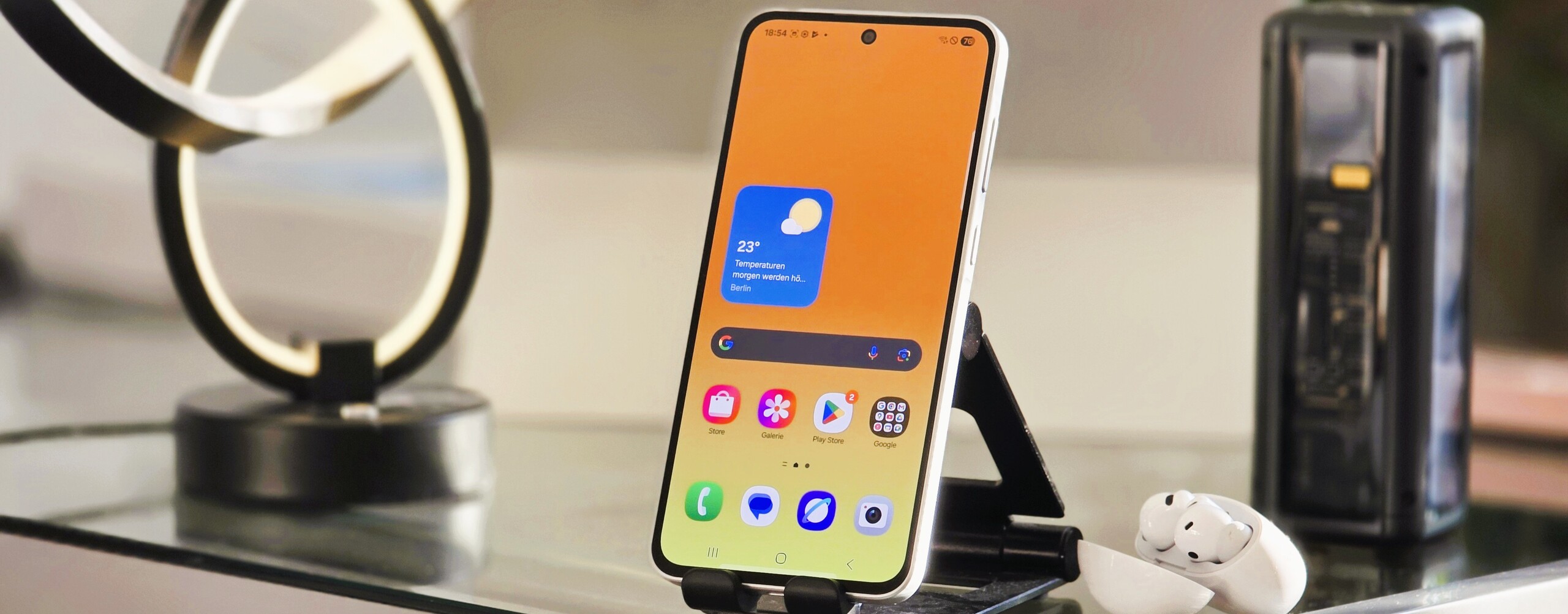
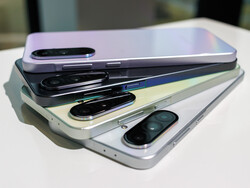
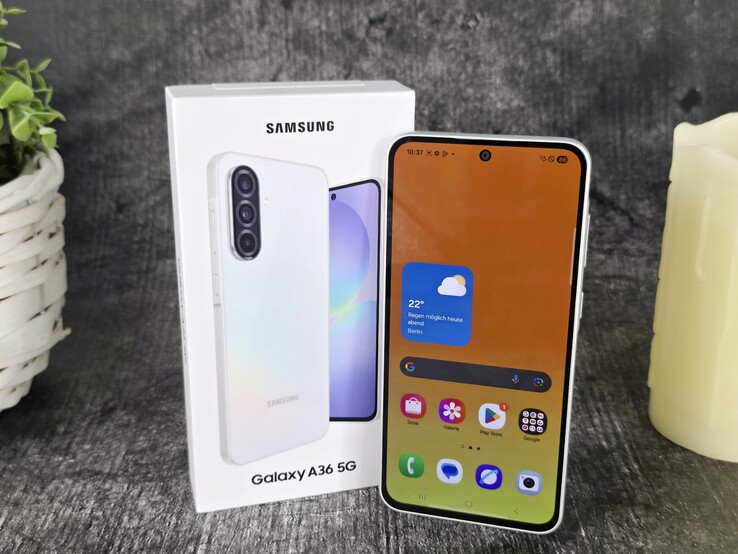








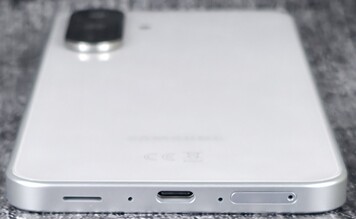
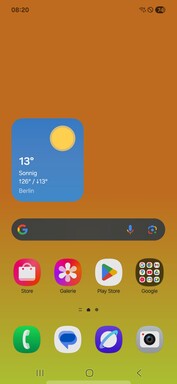
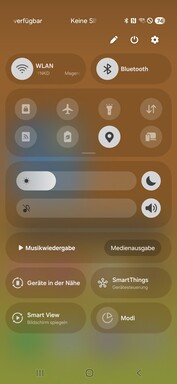
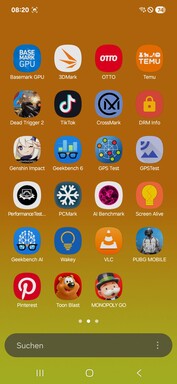
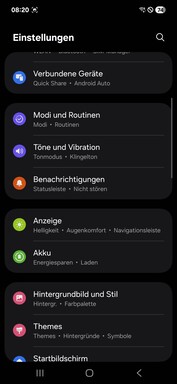
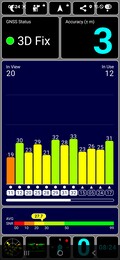
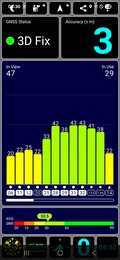

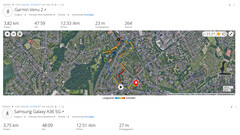














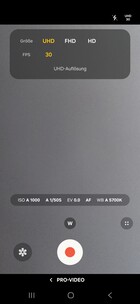





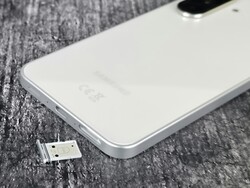


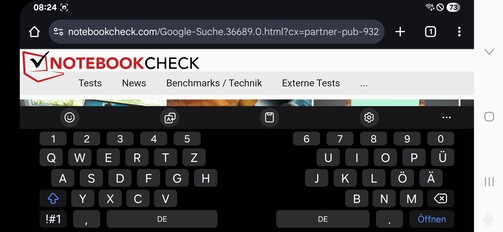
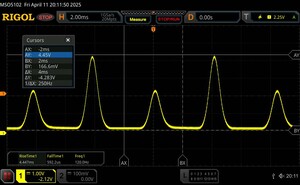







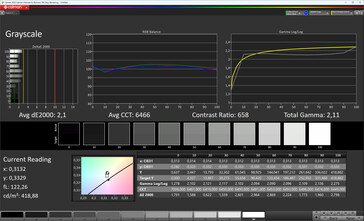
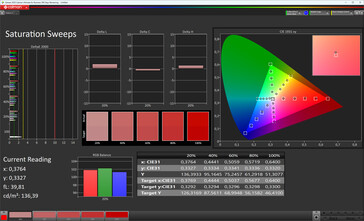
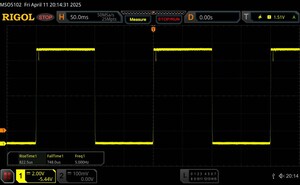
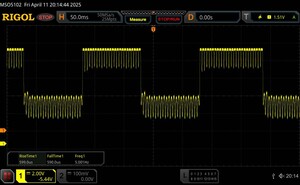
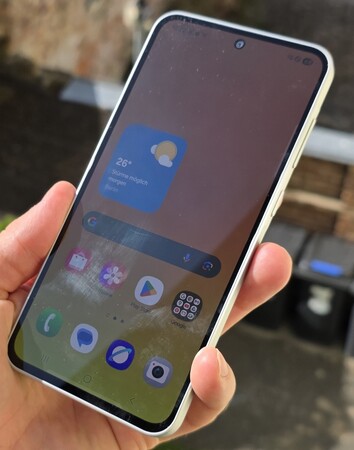
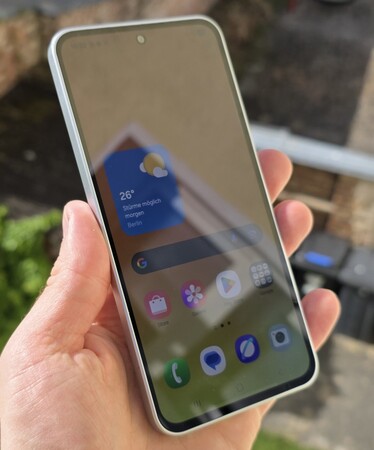




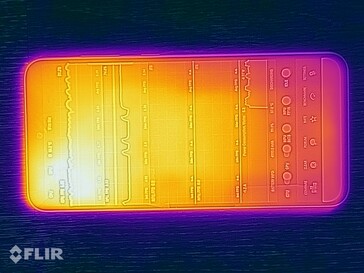
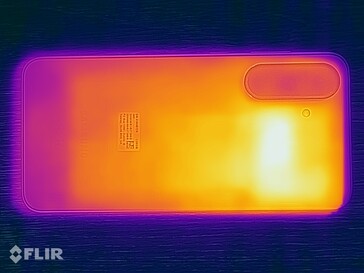
 Total Sustainability Score:
Total Sustainability Score: 










